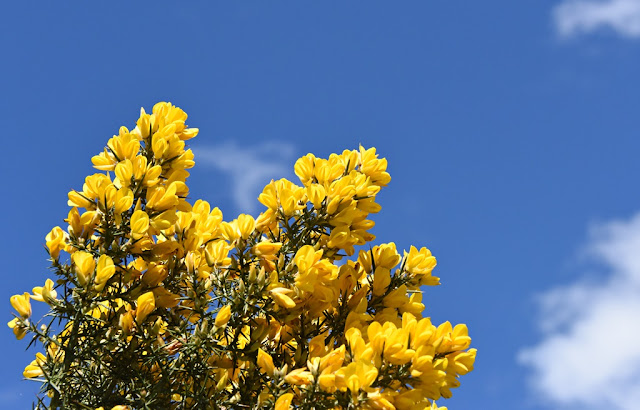Settled weather, dry underfoot and clear skies. The time had come for me to head off into the Fisherfield hills in the north-west Highlands to catch the sunset from one of the more remote hills in the country, Beinn Tarsuinn. This meant a 15km walk, so I left at 1700, following the glen to the Heights of Kinlochewe and beyond. After that, Slioch another fine hill, kept me company all the way.
I was heading into the sun as it slipped around behind Beinn Tarsuinn, with Meall Garbh and Mullach Coire Mhic Fhearchair on its right.
The initial view from the summit was stunning, all around. All quiet, only me. Soft light and a soft wind. Easy relaxing conditions. Then the sun began to dip quickly and the light, the colours, the scene were changing by the second. There was so much to see, to take in.
I had timed my arrival perfectly as the shadows were just beginning to lengthen and fill Gleann na Muice. An Teallach, the hill featured in this blog two posts ago, lies at the foot of the glen, with the distinctive jagged ridge of the pinnacles clearly visible. The scene of recent fun.
A ninety degree panorama of the hills lying to the south, Slioch fills the mid left ground with the Torridon hills behind. Loch Garbhaig and Lochan Fada lie in the centre.
A ninety degree panorama to the north-west, the sun dipping behind A' Mhaighdean, with the pointed peak of Ruadh Stac Mor next to the right.
Most of the hills in these ranges are formed from Old Red Sandstone, which looked splendid in the setting light. Later, once dark, the grey patches of lichen shone in the moonlight.
My main objective of this trip was to catch the setting sun over the table-top section of the ridge leading west from the summit of Beinn Tarsuinn. Years ago, I watched the mid-summer sunset from the neighbouring peak A' Mhaighdean, which the sun is dipping behind here. That is regarded as one of the most remote mountain tops in Scotland, and I like remote. That was a great night, but I reckoned the view fron Beinn Tarsuinn might be even better. Now I have done both, I reckon both are good, just different.
The mini plateau has been dscribed as a tennis court and billiard table. And like all such cared for game sufaces, it should be looked after. So please do not be tempted to go and camp there. You will ruin the fragile vegetation cover and spoil the whole experience of other people who like to to see it in its natural state. I demolished one ring of stones that had been left there by campers. No more.
Fortunately the table-top is a bit askew, and a bit sparse of grass. Any tennis balls would lkely go over the edge.
Beinn Lair and Beinn Airigh Charr fell asleep in the deepening shadows.
The sun finally set behind a bank of cloud out at sea, at about 2220. Then the western sky took a rose tint.
From then on, I was guided by the moon down the rocky ridge, across a steep mountain path, down over the moorland and along a path to the main glen at Kinlochewe.
The first cuckoo called at 0240, and a ring ouzel at 0255. After that wheatear, grasshopper warbler and stonechat added a chorus.
The moon's reflection sparkled on the lochans as I wandered down the slopes. And I wondered at yet another unforgetable experience in the hills.













































